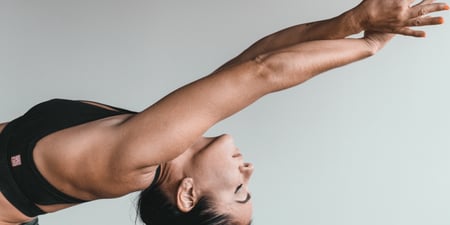
Welcome to the journey of becoming fit over 40! This guide is perfect for those who are interested in health and fitness but might not know where to start. If you are 45 years old, a bit overweight, and experiencing aches and pains, this guide will help you get fit, improve your health, and enhance your overall quality of life. Let's explore the steps to achieving a healthier, more active lifestyle as you age.
Understanding the Challenges
Age-Related Changes
As people age, their bodies undergo changes that can impact fitness levels. These include:
- Muscle Mass Decline: After age 30, about 3-5% of muscle mass is lost per decade. This speeds up after 40, making it important to engage in activities that help keep and build muscle.
- Slower Metabolism: Metabolism slows down with age, leading to weight gain if diet and activity levels aren’t adjusted.
- Joint Issues: Years of wear and tear can cause joint pain and stiffness, especially in the knees, hips, and lower back.
- Reduced Flexibility: Muscles and tendons lose elasticity as people age, making them less flexible and more prone to injuries.
Common Misconceptions
Many people believe that getting fit over 40 is tough, but it’s completely doable with the right approach. Here are some common myths:
- "It's too late to start": It’s never too late to start a fitness journey. Any physical activity can bring health benefits, no matter the age.
- "I need to go to the gym": While gyms have great equipment, fitness can be achieved at home or outdoors with minimal gear.
- "I have to work out every day": Consistency is key, but rest and recovery are just as important. A balanced routine is more sustainable and effective.

Steps to Getting Fit Over 40
1. Assess Current Fitness Level
Before starting any fitness program, it's important to see where one is starting from. This can be done through:
- Physical Examination: Check with a doctor for any health issues that might affect a fitness routine.
- Fitness Assessment: Measuring body composition, endurance, strength, flexibility, and balance. This can be done with a fitness professional or using self-assessment tools online.
2. Set Realistic Goals
Setting achievable goals keeps motivation high and helps track progress. The goals should be:
- Specific: Clearly defining what one wants to achieve, like "lose 10 pounds" or "run a 5k."
- Measurable: Making sure goals can be tracked with metrics like weight, body measurements, or fitness test results.
- Achievable: Setting goals that are realistic based on current fitness levels.
- Relevant: Ensuring goals match overall health and fitness objectives.
- Time-bound: Setting a timeline for achieving goals to stay focused and motivated.
3. Develop a Balanced Fitness Routine
A well-rounded fitness routine should include:
- Cardio Exercise: Activities like walking, jogging, cycling, or swimming help improve heart health and burn calories. Aim for at least 150 minutes of moderate-intensity or 75 minutes of high-intensity cardio per week.
- Strength Training: Building muscle mass is crucial for maintaining metabolism and strength. Include exercises like weight lifting, resistance band workouts, or bodyweight exercises (e.g., push-ups, squats) at least twice a week.
- Flexibility and Balance: Incorporate stretching and balance exercises to improve mobility and reduce injury risk. Yoga and Pilates are excellent options.
- Rest and Recovery: Include rest days to allow the body to recover, preventing injuries and promoting muscle growth.
4. Focus on Nutrition
Proper nutrition is vital for achieving fitness goals. Follow these guidelines:
- Balanced Diet: Eating a variety of foods from all food groups, focusing on lean proteins, whole grains, fruits, vegetables, and healthy fats.
- Hydration: Drinking plenty of water throughout the day, aiming for at least 8 cups daily.
- Portion Control: Being mindful of portion sizes to avoid overeating. Using smaller plates and listening to the body’s hunger cues.
- Limit Processed Foods: Reducing intake of processed foods, sugary drinks, and high-fat snacks. Opting for whole, nutrient-dense foods instead.
- Supplements: Considering supplements like vitamin D, calcium, and omega-3 fatty acids if needed, after consulting with a healthcare professional.
5. Manage Aches and Pains
Experiencing aches and pains is common as people age, but there are ways to manage discomfort:
- Warm-Up and Cool Down: Always start workouts with a warm-up and end with a cool down to prepare muscles and prevent injuries.
- Low-Impact Exercises: Choose low-impact activities like swimming or cycling to reduce stress on joints if joint issues exist.
- Proper Form: Using correct form and technique during exercises to avoid strain and injuries. Working with a fitness professional can help.
- Stretching: Including stretching in the routine to improve flexibility and ease muscle tension.
- Listen to the Body: Paying attention to signs of pain or discomfort. If something feels off, modify the exercise or take a break.
6. Stay Consistent and Motivated
Consistency is key to achieving long-term fitness goals. Here are some tips to stay motivated:
- Find Activities Enjoyable: Choose exercises that are enjoyable to make the fitness routine sustainable.
- Set Small Milestones: Breaking goals into smaller steps and celebrating achievements along the way.
- Workout Buddy: Partnering with a friend or joining a fitness group to stay accountable and make exercising more fun.
- Track Progress: Keeping a fitness journal or using a fitness app to track progress.
- Reward Yourself: Treating oneself to non-food rewards like new workout gear or a relaxing massage when goals are reached.
7. Incorporate Lifestyle Changes
Fitness is about more than exercise and diet; it’s about overall lifestyle changes for better health:
- Get Enough Sleep: Aim for 7-9 hours of quality sleep each night to support recovery and overall well-being.
- Manage Stress: Practicing stress-reducing techniques like meditation, deep breathing, or spending time in nature.
- Stay Active Throughout the Day: Including physical activity in daily routines, like taking the stairs, walking during breaks, or doing household chores.
- Regular Check-Ups: Scheduling regular health check-ups to monitor progress and address any health concerns.

Sample Workout Plan for Beginners Over 40
Here's a simple, beginner-friendly workout plan to get started:
Day 1: Cardio
- Warm-up: 5-10 minutes of brisk walking
- Main workout: 30 minutes of moderate-intensity cardio (e.g., walking, cycling, swimming)
- Cool down: 5-10 minutes of stretching
Day 2: Strength Training
- Warm-up: 5-10 minutes of light cardio (e.g., marching in place)
- Main workout:
- Squats: 3 sets of 12 reps
- Push-ups (modified if needed): 3 sets of 10 reps
- Bent-over rows (using dumbbells or resistance bands): 3 sets of 12 reps
- Planks: 3 sets of 30 seconds
- Cool down: 5-10 minutes of stretching
Day 3: Rest or Light Activity
- Gentle activities like walking, yoga, or stretching
- Tai Chi and Gi Gung
- Breathwork - deep belly breathing, alternate nostril breathing
Day 4: Cardio
- Warm-up: 5-10 minutes of brisk walking
- Main workout: 30 minutes of moderate-intensity cardio (e.g., walking, cycling, swimming)
- Cool down: 5-10 minutes of stretching
Day 5: Strength Training
- Warm-up: 5-10 minutes of light cardio (e.g., marching in place)
- Main workout:
- Lunges: 3 sets of 12 reps per leg
- Dumbbell chest press: 3 sets of 12 reps
- Seated shoulder press: 3 sets of 12 reps
- Bicycle crunches: 3 sets of 15 reps per side
- Cool down: 5-10 minutes of stretching
Day 6: Flexibility and Balance
- Warm-up: 5-10 minutes of light cardio (e.g., walking)
- Main workout:
- Yoga or Pilates session (30-45 minutes)
- Balance exercises (e.g., standing on one leg, heel-to-toe walk)
- Cool down: 5-10 minutes of stretching
Day 7: Rest or Light Activity
- Gentle activities like walking, yoga or stretching

In Summary
Getting fit over 40 is not only possible but also incredibly rewarding. By understanding the challenges, setting realistic goals, developing a balanced fitness routine, focusing on nutrition, managing aches and pains, staying consistent, and making lifestyle changes, anyone can achieve improved health and fitness at any age. The key to success lies in starting at one's own pace, listening to the body, and making gradual, sustainable changes. Embracing the journey, staying motivated, and celebrating every milestone along the way will result in a healthier, happier life.
References
1. Exercise and aging: Can you walk away from Father Time. Harvard Health Publishing; 2014.
2. Exercise for Older Adults. American Council on Exercise (ACE); 2005.
Disclaimer: This Content has been developed from our generous global community and is intended for informational purposes only. This Content is not, nor is it intended to be, a substitute for professional medical advice, diagnosis, or treatment and should never be relied upon. Further, the personal views and experiences published are expressly those of the author, and do not represent the views or endorsement of SoulAdvisor through the act of publication on our site.





























































